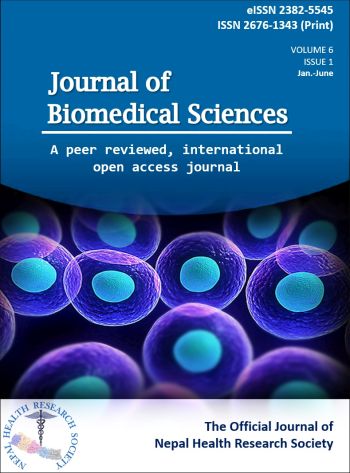T cell expressions of aberrant gene signatures and Co-inhibitory receptors (Co-IRs) as predictors of renal damage and lupus disease activity
IF 9
2区 医学
Q1 CELL BIOLOGY
引用次数: 0
Abstract
Systemic lupus erythematosus (SLE) is distinguished by an extensive range of clinical heterogeneity with unpredictable disease flares and organ damage. This research investigates the potential of aberrant signatures on T cell genes, soluble Co-IRs/ligands, and Co-IRs expression on T cells as biomarkers for lupus disease parameters. Comparative transcriptome profiling analysis of non-renal and end-stage renal disease (ESRD) phenotypes of SLE was performed using CD4 + and CD8 + cDNA microarrays of sorted T cells. Comparing the expression of Co-IRs on T cells and serum soluble mediators among healthy and SLE phenotypes. SLE patients with ESRD were downregulated CD38, PLEK, interferon-γ, CX3CR1, FGFBP2, and SLCO4C1 transcripts on CD4 + and CD8 + T cells simultaneously and NKG7, FCRL6, GZMB/H, FcγRIII, ITGAM, Fas ligand, TBX21, LYN, granulysin, CCL4L1, CMKLR1, HLA-DRβ, KIR2DL3, and KLRD1 in CD8 T cells. Pathway enrichment and PPI network analyses revealed that the overwhelming majority of Differentially Expressed Genes (DEGs) have been affiliated with novel cytotoxic, antigen presentation, and chemokine-cell migration signature pathways. CD8 + GZMK + T cells that are varied in nature, including CD161 + Mucosal-associated invariant T (MAIT) cells and CD161- aged-associated T (Taa) cells and CD161-GZMK + GZMB + T cells might account for a higher level of GZMK in CD8 + T cells associated with ESRD. SLE patients have higher TIGIT + , PD1 + , and lower CD127 + cell percentages on CD4 + T cells, higher TIM3 + , TIGIT + , HLA-DR + cell frequency, and lower MFI expression of CD127, CD160 in CD8 T cells. Co-IRs expression in T cells was correlated with soluble PD-1, PDL-2, and TIM3 levels, as well as SLE disease activity, clinical phenotypes, and immune-therapy responses. The signature of dysfunctional pathways defines a distinct immunity pattern in LN ESRD patients. Expression levels of Co-IRs in peripheral blood T cells and serum levels of soluble PD1/PDL-2/TIM3 can serve as biomarkers for evaluating clinical parameters and therapeutic responses.T细胞表达异常基因特征和共抑制受体(Co-IRs)作为肾损伤和狼疮疾病活动的预测因子
系统性红斑狼疮(SLE)具有广泛的临床异质性,疾病发作和器官损伤难以预测。这项研究探讨了T细胞基因、可溶性Co-IRs/配体和T细胞上的Co-IRs表达异常特征作为狼疮疾病参数生物标志物的潜力。使用CD4 +和CD8 + cDNA芯片对分选的T细胞进行了系统性红斑狼疮非肾病和终末期肾病(ESRD)表型的比较转录组图谱分析。比较了健康表型和系统性红斑狼疮表型的 T 细胞和血清可溶性介质中 Co-IRs 的表达。患有 ESRD 的系统性红斑狼疮患者在 CD4 + 和 CD8 + T 细胞上的 CD38、PLEK、干扰素-γ、CX3CR1、FGFBP2 和 SLCO4C1 转录物同时下调,而在 CD8 T 细胞上的 NKG7、FCRL6、GZMB/H、FcγRIII、ITGAM、Fas 配体、TBX21、LYN、granulysin、CCL4L1、CMKLR1、HLA-DRβ、KIR2DL3 和 KLRD1 则同时下调。通路富集和PPI网络分析显示,绝大多数差异表达基因(DEG)都与新型细胞毒性、抗原递呈和趋化因子-细胞迁移特征通路有关。CD8 + GZMK + T细胞的性质多种多样,包括CD161 +粘膜相关不变T细胞(MAIT)和CD161-老化相关T细胞(Taa)以及CD161-GZMK + GZMB + T细胞,这可能是与ESRD相关的CD8 + T细胞中GZMK水平较高的原因。系统性红斑狼疮患者的 CD4 + T 细胞中 TIGIT + 、PD1 + 细胞比例较高,CD127 + 细胞比例较低;CD8 T 细胞中 TIM3 + 、TIGIT + 、HLA-DR + 细胞频率较高,CD127、CD160 的 MFI 表达较低。T细胞中Co-IRs的表达与可溶性PD-1、PDL-2和TIM3水平以及系统性红斑狼疮的疾病活动、临床表型和免疫疗法反应相关。功能障碍通路的特征定义了 LN ESRD 患者独特的免疫模式。外周血 T 细胞中 Co-IRs 的表达水平和血清中可溶性 PD1/PDL-2/TIM3 的水平可作为评估临床参数和治疗反应的生物标记物。
本文章由计算机程序翻译,如有差异,请以英文原文为准。
求助全文
约1分钟内获得全文
求助全文
来源期刊

Journal of Biomedical Science
医学-医学:研究与实验
CiteScore
18.50
自引率
0.90%
发文量
95
审稿时长
1 months
期刊介绍:
The Journal of Biomedical Science is an open access, peer-reviewed journal that focuses on fundamental and molecular aspects of basic medical sciences. It emphasizes molecular studies of biomedical problems and mechanisms. The National Science and Technology Council (NSTC), Taiwan supports the journal and covers the publication costs for accepted articles. The journal aims to provide an international platform for interdisciplinary discussions and contribute to the advancement of medicine. It benefits both readers and authors by accelerating the dissemination of research information and providing maximum access to scholarly communication. All articles published in the Journal of Biomedical Science are included in various databases such as Biological Abstracts, BIOSIS, CABI, CAS, Citebase, Current contents, DOAJ, Embase, EmBiology, and Global Health, among others.
 求助内容:
求助内容: 应助结果提醒方式:
应助结果提醒方式:


